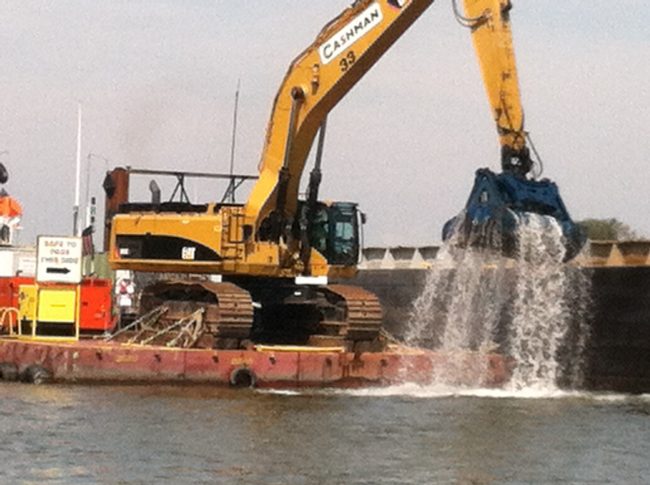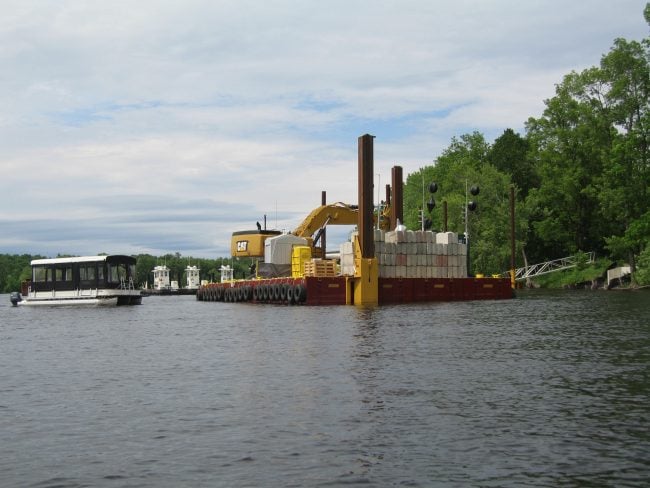PCB contamination continues to plague the Hudson: The time to act is now

(Photo by Abigail Jones, 2012)
View more images on our Flickr site
New Information Shows Why EPA Must Require Additional Dredging
Today, the New York State Department of Environmental Conservation joined Riverkeeper and others in our call for EPA, in its upcoming Five Year Review, to take additional steps to clean up and restore the health of the Hudson River. Specifically, we are asking that EPA take a detailed look at GE’s six years’ worth of work in cleaning up the river, and to require additional dredging to ensure that the remedy actually results in a healthier river and fish we can safely eat.
New York State, through DEC, is one of the Natural Resource Damages Trustees for the Hudson River. Federal law empowers the State to seek damages caused by chemical contamination like PCBs in the river.
In 2002, the original remedy selected for the Hudson River did not require complete removal of the PCBs from the Upper Hudson River. As a result, EPA must undertake a review of the remedy every five years. This “Five Year Review” considers whether the remedy – in this case dredging, natural attenuation, and fish consumption advisories – is and will remain “protective of human health and the environment.”
In 2012, EPA undertook its first Five Year Review of the remedy, but, as Riverkeeper pointed out at the time, that process was woefully inadequate.
For the new EPA Five Year Review, Riverkeeper and others are part of the team. Our participation will help ensure that critical evidence is appropriately reviewed and the necessary studies are done by EPA.
Mounting Evidence Points to a Need For More PCB Clean-up Work
The new data and evidence demonstrate that EPA must require more to be done in the river – to protect us and to protect the health of our River:
- A federal NOAA study finds that additional dredging of the left-behind PCB hot spots is necessary to reach the fish consumption levels in the timeframes anticipated by EPA. The current remedy will take almost an additional half a century to reach critical milestones for fish consumption. If additional dredging is required, the time to reach those milestones would be cut almost in half. The additional work would bring the cleanup timeframes closer to what EPA originally expected.
- The advisory to the public to limit eating Hudson River fish is utterly failing to protect human health. Despite these warnings being in place since the 1970s, people continue to eat fish from the Hudson River, many of them fishing to help feed their families. And yet EPA’s remedy relies heavily on this fish consumption advisory as the primary method to protect human health post-dredging. Failure of the fish advisory is a failure of the remedy.
- Recent studies by Dr. David Carpenter indicate that the volatilization of PCBs from the Hudson River may be an exposure pathway that was not previously considered by EPA. The exposure can be limited and reduced by removing additional PCBs by dredging some of the remaining areas in the Upper Hudson.
- The current information about the risks posed by PCBs is much clearer than in the past. PCBs have recently been declared a “human carcinogen” – at the time of the remedy selection the chemicals were known as a “probable human carcinogen”.
EPA must meaningfully review the new evidence and other critical information as part of its Five Year Review. This information shows that additional action is needed in the Hudson River to ensure that the remedy is and remains protective of human health and the environment.
We will keep you posted for public information sessions and comment periods on EPA’s Five Year Review, which is scheduled to be completed in April 2017.


